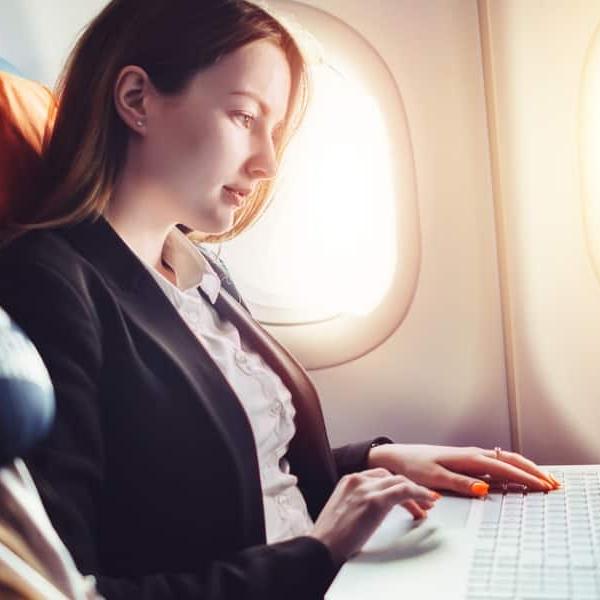Travel and Expense
Where’s Everyone Going?
Yes, clicking a Zoom link is easier than packing an overnight back and heading to Cleveland, but after a year-and-a-half of meetings in your spare bedroom, Cleveland – or Chicago or Sydney or anywhere – is looking pretty good right now. Getting there, however, isn’t going to be as easy as it used to be.
Travelers can’t just schedule a meeting, book tickets, reserve a room, and show up with a smile and a handshake. Your organization may not want people to travel yet, and your clients may not be ready to see their smiles or shake their hands.
Our soon-to-be-post-pandemic world has been forever altered, and business travel did not make it through unscathed. To be successful, companies must go farther than ever to ensure the safety of their travelers. They must provide more pre-trip details – from COVID-19 protocols in their travelers’ destinations, to neighborhood safety scores that keep employees comfortable, confident, and productive. Companies must wring every ounce of efficiency, sustainability and, again, safety out of their budgets.
How are they doing it? A recent EY/SAP Concur whitepaper offers the answers by asking four critical questions:
Why is travel so important?
How do businesses measure its value?
What’s changed?
How do you lead the next era of business travel?
We’ve got a few questions, too, and the answers should help get you moving again.
Do you really want to go that far?
The short answer is “probably.” Your everyday travelers (not to mention road warriors) are eager to get back out there because they’re worried their client relationships (and, therefore, the business they’re doing) is going to suffer. And, at a very elemental level, they miss the people they meet on the road.
Your travelers want to get going
According to a 2021 Global Business Traveler Study:
- 38% of business travelers are concerned that if they can’t travel, it will be difficult to build new relationships with clients.
- 45% are concerned about developing and maintaining business connections.
- 54% want to travel to make personal connections with customers and colleagues.
Human connection is critical in every facet of our lives, and business is no different. We need to sit face-to-face across the table from the people we work with and for, and we’re now willing to take on extra precautions to do so. This might mean something as simple as the aforementioned face masks, or as involved as implementing pre-approvals into the booking process.
Regardless, employees want to travel again, they’ll do what it takes to get there.
Is all this worth it?
This time, the short answer is “maybe.” Corporate travel as a whole is undeniably valuable to companies, but it’s important to determine the value of each individual trip. According to the EY/SAP Concur whitepaper, if a visit to your client doesn’t drive revenue, or someone was just there last week, or the team can make do with a video conference, it might make sense to go, but at some later date.
Every trip employees take should align with company goals, and going to London just because you can might not accomplish anything. For every visit to have value, every trip must have a purpose.
Is it safe and sustainable?
Here, the answer is “it better be.” Safety and duty-of-care details have always been important, but the pandemic has shone a brighter light on the issue than we’ve seen in decades. As the whitepaper outlines, your organization simply must have protocols in place to ensure safe travel, to find and contact travelers, to evacuate travelers in emergency situations, and to deal with illness or injury on the road. You’ll also see how to build a “traveler toolkit” complete with safety programs and simple “do’s and don’ts” – plus a discussion on artificial intelligence and its role in supporting health assessments, immunity requirements, and travel readiness.
Why? Employees won’t necessarily want to work for organizations who can’t or won’t offer this level of safety or control. According to the whitepaper, 54% of them are likely to quit if they aren’t offered the flexibility they want.
You’ll also have to look at restructuring travel to be more sustainable. Picking trains over planes, for example, or partnering with airlines that use sustainable jet fuel will soon be part of everyday travel practices. Employees will want and need to be able to track their carbon footprints. And companies all over the world will have to explore what travel does to the planet, not just what it does for their business.
How are you going to get there?
There’s no one simple answer here at all. But there are steps you can take, such as:
- Embrace a leadership role.
- Establish a task-force mindset.
- Establish clear sources of truth for safety information.
- Make sure you have the technology to get that information to employees.
- Get comfortable ceding control to employees.
- Get ahead of regulatory requirements.
- Don’t go it alone.
No one knows where travel is headed, but we know that when it’s done safely and done differently, it will take you places you’ve never been before.
For more information on navigating what’s next, download the whitepaper.
